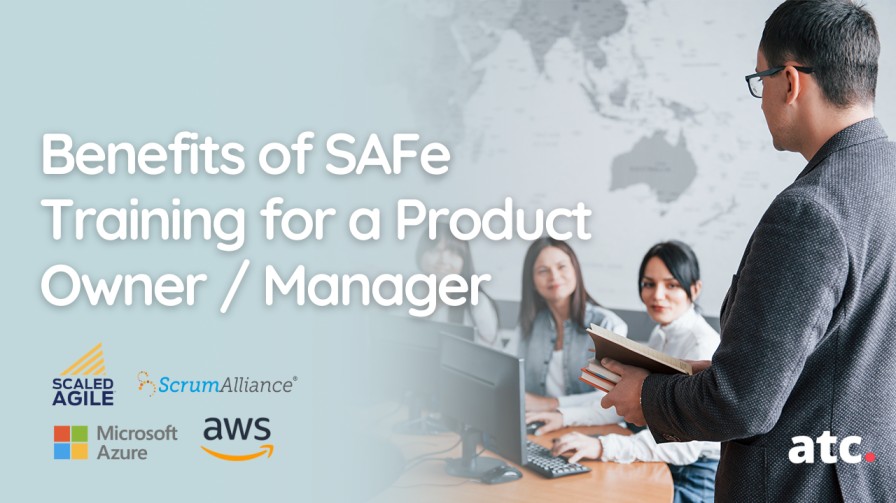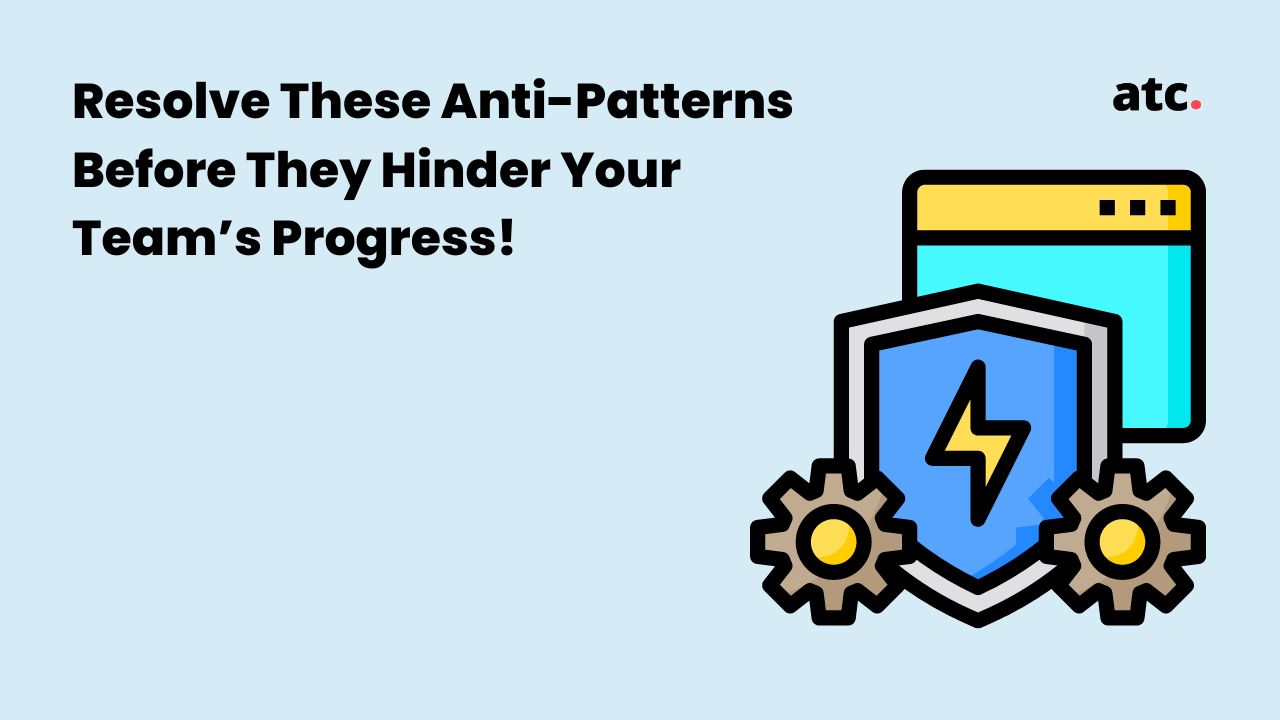Subscribe to the blog
Product teams in organizations often find ways to work efficiently and productively through the planned distribution of the workload. They learn to process feedback and deliver solutions to the users fast. However, even the most efficient systems can go awry when an enterprise scales up and expands. This is where a product owner or manager’s SAFe training comes in handy. In this blog, we will go over the concept of SAFe training and elaborate on the specific benefits of opting for SAFe training and certification for a Product Owner.
In Japanese martial arts, the concept of Shu Ha Ri describes the stages of learning all the way to mastery. In simple words, it describes the three stages of learning and assimilation as something that starts by following the teachings of one master, followed by branching out to learn from other masters, and finally, learning from one’s own experience and practice.
Software development teams also widely follow the same concept to deliver results efficiently and effectively. In the Shu stage, DevOps establish a pattern and protocol which creates muscle memory. The team functions in a rhythm guided by this pattern across different assignments. In the Ha stage, the team reaps the benefits of cadence. Once cadence is established, they can enter the Ri stage and experiment with novel ideas or more efficient practices.
But what exactly helps development teams achieve all of this? Two words: Agile Framework.
The Blooming Relevance of Agile
Agile refers to the philosophy of software development that emphasizes the value of quick iterations in products to serve the customers more robustly. The scrum and kanban agile frameworks are systems designed to help development teams solve problems faster and deliver solutions to customers with a high degree of predictability. Additionally, they are able to react with ‘agility’ and adaptability when they receive new information.
Many organizations have nailed the implementation of agile in individual teams. There are clear directions, a plethora of benefits, and plenty of resources. The real challenge, however, is extending it across multiple teams in a large organization; in other words, implementing agile on a large scale.
In the real world, we often see tech and tech-adjacent companies grow rapidly — and often suddenly — into huge organizations with multiple departments. So, what happens when we want to implement the agile framework at scale in a large organization? How can we coordinate the schedules of thousands of employees and level up their training and skills?
We turn to SAFe for answers.
What is the Scaled Agile Framework for Enterprises (SAFe)?
The Scaled Agile Framework® (SAFe®) refers to a set of organizational and workflow patterns aimed at implementing agile practices on the enterprise level. If teams are using the structured agile framework to define roles and responsibilities, plan and manage work, and lay the guiding principles, then scaling up the framework to an entire organization requires extending this framework to the entire organization as well.
Finding a convenient time and place for all team members to meet and train together can quickly lead to scheduling exhaustion. The Scaled Agile Framework (SAFe) allows DevOps teams to organize training in a way that makes it easier to work around conflicting schedules and locations. We will talk about how to get the most out of this type of training in this blog.
How is SAFe Useful for Product Managers & Owners?
Product Management is undergirded by the agile philosophy. Harnessing the agile methodology from the Product Management perspective allows teams to build products faster and more effectively. SAFe promotes alignment, collaboration, and delivery across large numbers of agile teams. It was formed around three primary bodies of knowledge: agile software development, lean product development, and systems thinking.
To put it simply, SAFe helps scale with agility as businesses or organizations inevitably grow in size.
Getting a SAFe training certification can help product leaders, be it managers or owners, be more successful at their jobs. This can, in turn, materialize into better career growth, recognition at work, and other intrinsic and extrinsic value-adds. The SAFe Framework can benefit organizations of all types — both startups and enterprises with multiple teams find value in scaling agile. Companies like Disney, FedEx, Chevron, American Express, Coca-Cola, PepsiCo, Cisco, Fitbit, and HP all use the SAFe framework for their product development process.
Benefits of SAFe Training for Product Owner/Manager
The SAFe Certification program helps to channelize the skills of product owners and managers to help them leverage their full potential. It helps them understand how they can execute their roles with agility and creativity to develop successful products.
SAFe training is a digital product management certification that is meant for managers. It helps them gain the necessary knowledge and skills to successfully manage their product life cycle.
Frameworks like SAFe provide a detailed and structured approach on how to scale agile beyond the team level.
Organizations using SAFe are able to rely on a more holistic and end-to-end toolkit to assist them in adopting enterprise agility.
Here’s a good metaphor for looking at how SAFe training can make a world of difference: If an organization is scaling up, but doing it sluggishly, then it is like a container ship. But if it leverages enterprise-level agile, its various teams are like a fleet of speedboats. This fleet manages to stay cohesive, tied together by the aligning values of an agile framework.
Now, let’s look at some specific benefits that product owners and managers can reap from SAFe training for Product managers.
Quality
The SAFe framework seeks to implement agility without ever compromising on quality. If anything, it boosts the quality of the work being delivered by various teams. How does it do this? SAFe maintains that the teams should define what accomplishing a task or project means for them. Since everyone defines their output and success parameters, they’re more likely to have clarity on their job role. SAFe Agile training also familiarises product owners with quality development practices that can be incorporated into working arrangements.
The 5 dimensions of quality as highlighted by SAFe include flow, architecture and design quality, code quality, system quality, and release quality.
Leading management thinker W. Edwards Deming once said, “Inspection does not improve the quality, nor guarantee quality. Inspection is too late. The quality, good or bad, is already in the product. Quality cannot be inspected into a product or service; it must be built into it.” And that is precisely what Agile does for teams — establishes faultless processes for quality product development.
Productivity & Efficiency
A large part of the agile mindset training is the application of cadence. This is made possible through sprints or iterations. When we have a rhythm for all possible issues, there’s less uncertainty, more muscle memory, less complexity, and more quality.
It’s like the whole team is a machine and everyone knows their part in this machinery, like cogs in a wheel. Each part has a learned function that it performs up to mark, and that helps keep the machinery going. Such synchronization increases productivity since no time or resources are wasted in practices or activities that slow down progress.
Therefore, a compelling argument favoring SAFe product owner certification is the familiarisation with the methodology to increase efficiency.
Informed Decision-making
One of the most important parts of being a product owner or product manager is managing the product development process and taking the call on all crucial decisions. SAFe Agile training gives you the necessary skills for this by helping hone your decision-making prowess.
Product managers are driven by the customer’s needs. So it’s also important for them to have a keen understanding of the customer’s operations, including but not limited to departments like finance, operations, marketing, sales and strategy. Based on these insights, product managers decide what to produce and what not to produce.
SAFe training prepares you with the skills and perspective needed to effectively gather and utilize these insights and, in the process, uplevel your customer experience. In today’s time, troves of data are available at our disposal, and everything is heavily digital-driven. For today’s product owner or manager, it is important to take all the available information, prioritize tasks that need urgent attention, and manage the product successfully while also brainstorming new product ideas.
SAFe training for product owners can help them make informed decisions through a planned approach, giving them the resources that help separate useful information from a sea of data, and then leverage that information for robust decision-making that responds to the ever-changing customer needs.
Productive Collaboration
Agile teams realize that meetings aren’t often as productive or lead to actionable outcomes, so agilists replace them with ceremonies like the daily scrum. This is a more conscious, more productive approach to collaboration. Big room planning events and regular synchronization meetings can fill in for the overarching discussions, all of which are covered by the SAFe training programs.
To a large extent, scaling agile also decentralizes decision-making. Individual teams are given the autonomy they require to move forward with their work, whereas product leaders at the organizational level make only enterprise-level or strategic decisions.
Open Communication & Transparency
In the ‘planning, training, executing’ chain of events, a lot of changes are often introduced. This is especially true for agile teams where iterations happen fast. Therefore, it is crucial to keep an open communication channel with team members along with transparency about progress. The principles of SAFe training foster trust-building behavior.
“How”, you may ask? Trust is built through the way of working: teams promise to deliver work in small batch sizes so problems can be solved faster (and also at the level at which they surface), and there is real-time tracking of the backlog progress.
Product managers are in charge of the backlog, and SAFe training ensures through its practices that there is visibility into the team’s backlogs. So product owners/managers benefit directly from the hands-on approach of the SAFe principles. Lean-Agile leaders also create an environment that fosters trust and transparency.
Reflection
As a manager responsible for product development and delivery, it is important to have space and time for planning and reflection. In a fast-paced world with iterative deliveries, it can seem hard. The SAFe framework teaches product managers to put planning and reflection cadences at all levels in the enterprise. This also reinforces the transparency principle discussed above.
When everyone in the organization has knowledge about the current and future goals of the business, synchronizing people and activities becomes much easier.
Stakeholder Management
Product managers work with outside stakeholders, whereas product owners work with internal stakeholders. SAFe training provides them with the knowledge and resources to align all stakeholders around the vision of the product.
It is imperative that the product manager is aware of the needs of an agile team, so they can properly define the product vision, create flows and patterns around the vision, and deliver the product successfully. In a way, stakeholder management lies at the heart of all the processes. This makes SAFe training even more important.
The best stakeholder management mechanism will enable the product managers to build a product roadmap that impresses those on the board while also aligning it with Agile best practices.
Value Maximisation
The Product Manager training also aims to maximize the value of the product being made, the processes being implemented, and the human resources being hired. The SAFe framework helps product leaders create a balance between predictability and market responsiveness. This precarious balance is the key to success in iterative production and can only be serviced through Agile teams.
Automation with a Purpose
A big part of SAFe training is learning to choose the right tools, strategies, and information in creating systems. For every function, there are a plethora of tools available in the industry, from infrastructure to configuration and monitoring. SAFe training imparts knowledge about identifying the right tools that are built for your specific organizational needs.
Conclusion
An agile transformation at scale is no small feat. It requires organizational endurance and resilience. For product leaders working to build their careers in an agile world, the SAFe training credential not only validates their knowledge and understanding but also provides ready access to a treasure trove of resources and tools that can support them as their organizations transform into lean-agile enterprises.
Back in 2011, when Dean Leffingwell and Drew Jemilo released SAFe to help organizations design better systems and software to better meet customers’ changing needs, traditional project management tactics worked. Today, in a digital-first world, market responsiveness and adaptability have become treasured team skills.
One of the most important skills a Product Owner can have is making quick but well-measured decisions and then communicating them effectively. After all, having a good relationship with the development team is the most important asset for a Product Owner. That's why it is important to be a good communicator. Such skills are honed within the product development context in the Scaled Agile Framework (SAFe) training.
Unleash your team’s potential and see the benefits with our DevOps Management Program. Book a Demo here.




